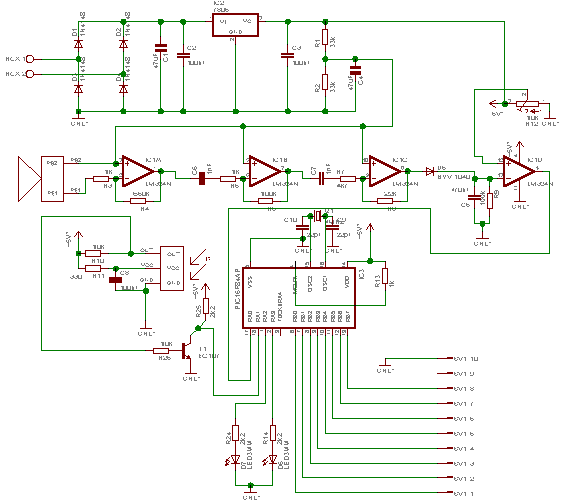
1. New IR/ultrasonic receiver
Preliminary note: the sender remains unchanged. So look at its location: IR/Ultrasonic-sender. Note that the potentiometer R2 10k should be a linear type.
The new IR/ultrasonic-receiver has a much better sensitivity than its predecessor. This is reached by replacing only four parts and removing the 4bit D/A converter:
the capacitor C6 (10nF) is replaced by a 1nF capacitor
the capacitor C7 (3300pF) is replaced by y 1nF capacitor
the diode D6 (1N4148) is replaced by a Schottky diode BYV1040
the resistor R6 (220k) is replaced by a resistor 100k
the resistors R14-R23 and the opto-couplers are removed
To make the device more "readable" a LED and a 2k2 resistor (new R14) are added to output RA2 (pin1) of the PIC 16F84. The problem with an IR and ultrasonic device is that you don't see anything, nor do you hear any sound.
The rest of the parts may be read in the partlist. Note that R11 should be 330 Ohm.
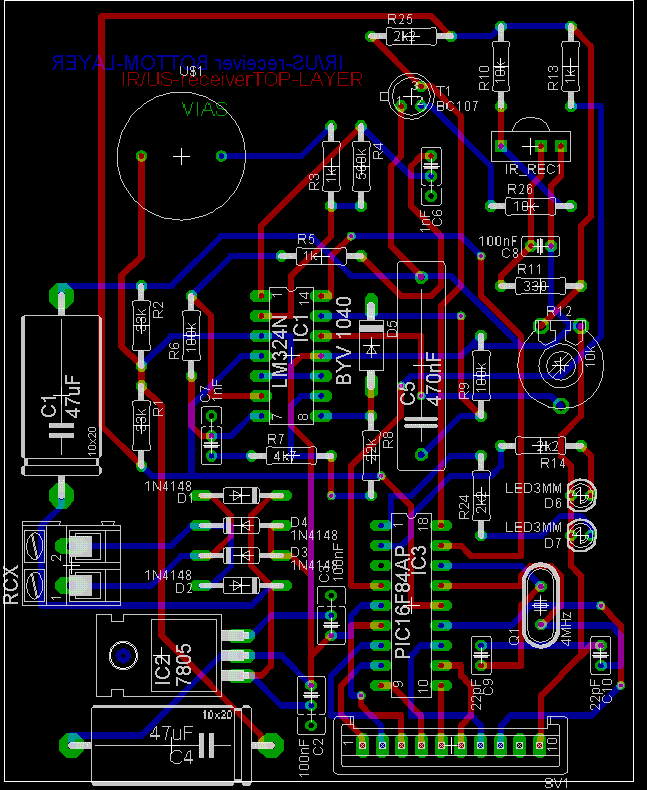
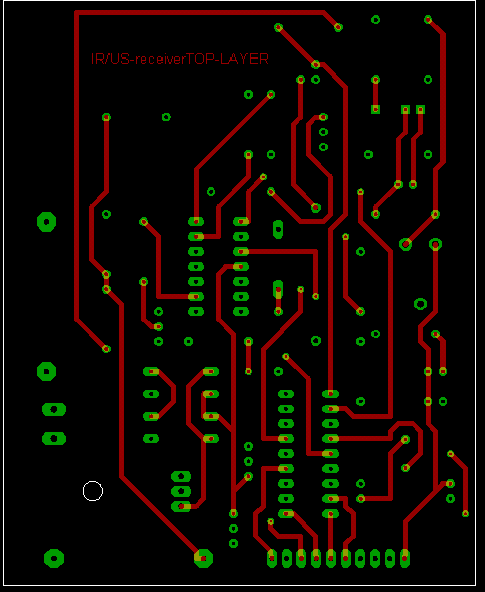
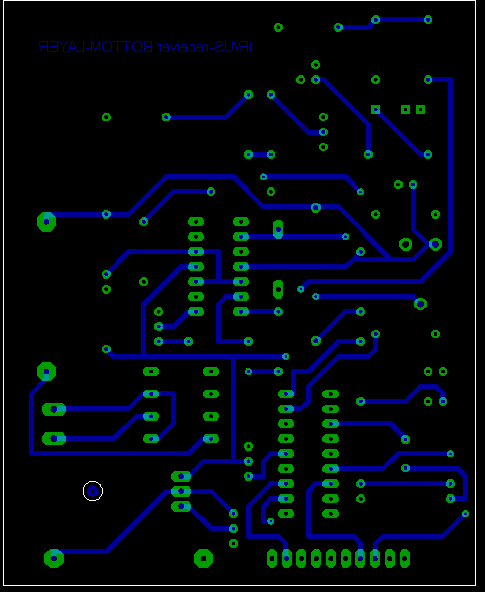
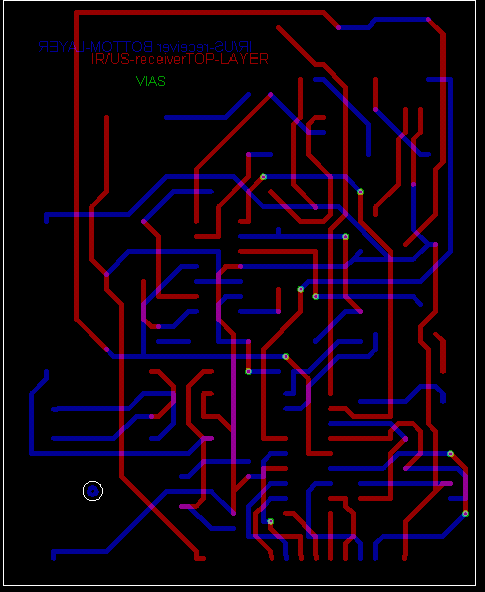
The output of the receiver is an 8-bit line plus a GND-line. They must be connected to the D/A-converter, which is wired to an RCX-input.
An 8-bit D/A conversion makes the complex information-transfer-protocol of the first beacon project superfluous. This increases the operation speed and makes the whole device finally compatible to the standard RCX-firmware. So the device may be run with Robolab and/or nqc and other.
For best IR-reception, bend the IR-modul to point vertically to the top.
For specialists: the PIC RA0-input line passes from HIGH to LOW, when the ultrasonic peak detector is active.